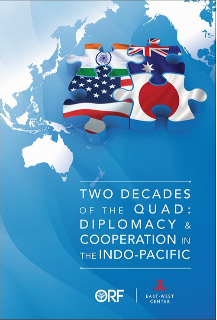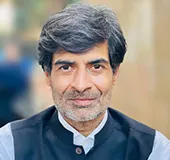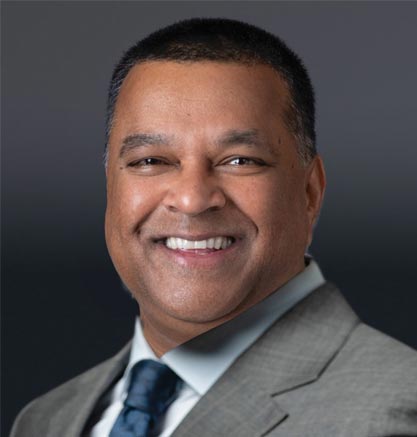Introduction
Quad countries are home to a combined 1.9 billion people—or 24% of the world’s population— and represent 35% of the world’s GDP and 18% of global trade[1]
The Quad, initially known as the Quadrilateral Security Dialogue, is a strategic diplomatic partnership composed of Australia, India, Japan, and the United States. The group’s origins can be traced back to December 2004 when these four countries first came together as an ad-hoc grouping to provide humanitarian aid and assistance to countries affected by the Indian Ocean Tsunami. Despite the end of the humanitarian relief operation in January 2005, a push for a more formal partnership continued. In 2007, the group held its inaugural, albeit informal first meeting on the sidelines of the ASEAN Regional Forum in Manila, the Philippines. However, the initial iteration of the Quad was short-lived, as concerns about the group’s impact on diplomatic relations—particularly with China—led to its informal dissolution in 2008.
The Quad regained momentum in 2017, driven by shared concerns regarding the assertiveness of China in the Indo-Pacific region, the need to further promote cooperation and strategic consultations between its members, and a desire to uphold peace and stability in the Indo-Pacific. Senior officials from the four countries met on the sidelines of the 2017 East Asia Summit in Manila, signaling a renewed interest in collaborative efforts. Over the next few years, the Quad focused on policy coordination and the provision of public goods in the Indo-Pacific, both bilaterally and through regional institutions. In the face of the global COVID-19 pandemic beginning in early 2020, the Quad gained further relevance as the grouping shifted its focus to vaccine diplomacy, health security, and economic recovery, evolving from a senior officials’ dialogue to leader-level summits. Since 2019, Quad foreign ministers have met seven times and the Quad Leaders have met five times. Although there have been no stand-alone meetings of Quad defense ministers, the Raisina Dialogue, which is held annually in New Delhi, India, has been a venue for panels of Quad naval chiefs to meet and discuss.
TIMELINE: GENESIS AND EVOLUTION
| 2004 |
FORMATION OF THE QUAD |
The Quad is formed by Australia, India, Japan, and the United States, to coordinate relief efforts after the Indian Ocean Tsunami. |
| 2007 |
TRANSFORMATION INTO A STRATEGIC DIALOGUE |
The first Quad officials’ meeting takes place and focuses on shared interests in the Indo-Pacific region. |
| 2008-2012 |
DISSOLUTION OF THE QUAD |
Australia withdraws from the Quad over concerns of antagonizing China, however Prime Minister Shinzo Abe of Japan later calls for a revival of the partnership. |
| 2017-2024 |
REVIVAL OF THE QUAD |
In 2017, the Quad is revived and expands its focus to include new policy areas. |
|
EXPANSION OF COOPERATION |
The Quad now includes joint military exercises, six working groups, and an investors network, among other initiatives. |
| 2021-2024 |
LEADERS’ SUMMITS CHART THE PATH FORWARD |
Annual Quad Leaders’ Summits have provided high level guidance through joint statements on shared goals and principles. |
GENERAL TIMELINE OF EVENTS
| 2004 |
December 26 |
Australia, India, Japan, and the United States form a coalition to coordinate aid and streamline assistance following the Indian Ocean Tsunami, which killed 228,000 people across 14 countries in the Indo-Pacific.[2] |
| 2007 |
May 25 |
Quad senior officials meet for the first time on the sidelines of the ASEAN Regional Forum in Manila, the Philippines. |
|
August 22 |
Prime Minister of Japan, Shinzo Abe’s “Confluence of the Two Seas” speech provides a foundation for the Quad as an “open and transparent” network that “will allow people, goods, capital and knowledge to flow freely.”[3] |
|
September 7 |
Australia, Japan, and Singapore participate in the Exercise Malabar, previously a bilateral naval exercise between the United States and India, sparking protest from China. |
| 2008 |
February 5 |
Australia assures China that it will withdraw from the Quad. |
| 2012 |
December 27 |
Prime Minister Shinzo Abe calls for a “democratic security diamond” whereby “Australia, India, Japan, and the U.S. state of Hawai’i form a diamond to safeguard the maritime commons stretching from the Indian Ocean region to the western Pacific.”[4] |
| 2015 |
October 12 |
Japan becomes a permanent member of Exercise Malabar. |
| 2017 |
November 12 |
In the first senior-level meeting of the renewed Quad, officials from all four countries meet on the sidelines of the ASEAN Summit in Manila, the Philippines. |
| 2018 |
June 7 |
Quad senior officials meet for a second time on the margins of the ASEAN Senior Officials’ Meeting in Singapore. |
|
November 15 |
The third Quad Senior Officials’ Meeting occurs at the East Asia Summit in Singapore. |
| 2019 |
May 31 |
The Quad holds its foreign ministerial-level meeting on the sidelines of the United Nations General Assembly in New York City, the United States. |
| 2020 |
November 2 |
Australia rejoins Exercise Malabar. |
| 2021 |
March 12 |
The first Quad Leaders’ Summit is held virtually and the joint statement The Spirit of the Quad is released. |
|
September 24 |
The second Quad Leaders’ Summit is held in-person in Washington D.C., the United States. |
| 2022 |
March 4 |
The third Quad Leaders’ Summit is held virtually to discuss the conflict in Ukraine and its impact on the Indo-Pacific region. |
|
May 24 |
The fourth Quad Leaders’ Summit takes place in Tokyo, Japan as a standalone meeting. This is the second in-person Quad Leaders’ Summit. |
| 2023 |
March 3 |
The Quad Working Group on Counterterrorism is announced at the sixth Quad Foreign Ministers’ meeting in New Delhi, India. |
|
May 20 |
The fifth Quad Leaders’ Summit takes place in Hiroshima, Japan on the sidelines of the Group of Seven Summit. |
TIMELINE OF SENIOR OFFICIALS’ MEETINGS, FOREIGN MINISTERS’ MEETINGS, AND LEADERS’ SUMMITS
| Year |
Meetings |
| 2004 |
● December - Indian Ocean Tsunami Coalition |
| 2007 |
● May 25 - Informal meeting on sidelines of ASEAN Regional Forum |
| 2017 |
● November 12 - Senior Officials’ Meeting |
| 2018 |
● June 7 - Senior Officials’ Meeting ● November 15 - Senior Officials’ Meeting |
| 2019 |
● May 31 - Senior Officials’ Meeting ● September 26 - Foreign Ministers’ Meeting ● November 4 - Senior Officials’ Meeting |
| 2020 |
● September 25 - Senior Officials’ Meeting ● October 6 - Foreign Ministers’ Meeting |
| 2021 |
● February 18 - Foreign Ministers’ Meeting ● March 12 - Leaders’ Summit ● August 12 - Senior Officials’ Meeting ● September 24 - Leaders’ Summit |
| 2022 |
● February 11 - Foreign Ministers’ Meeting ● March 3 - Leaders’ Summit ● May 24 - Leaders’ Summit ● September 23 - Foreign Ministers’ Meeting |
| 2023 |
● March 3 - Foreign Ministers’ Meeting ● May 20 - Leaders’ Summit ● September 22 - Foreign Ministers’ Meeting |
Quad Member Participation in Trilateral Partnerships
Since regrouping in 2017, the Quad has announced the creation of six working groups which focus on a variety of policies and initiatives. During the inaugural Leaders’ Summit held virtually in March 2021, the group announced a Quad Vaccine Partnership—later renamed the Quad Health Security Partnership—alongside the establishment of a Critical and Emerging Technologies Working Group and a Climate Working Group.[5] A Space Working Group was established later that year during the first in-person Leaders’ Summit held in Washington, D.C., the United States.[6] As Quad activities continue to evolve beyond traditional security concerns, the grouping now includes progressive partnerships such as the Quad Cybersecurity Partnership, the Quad Partnership for Cable Connectivity and Resilience, the Indo-Pacific Partnership for Maritime Domain Awareness, and the Quad Partnership on Humanitarian Assistance and Disaster Relief.
As the Quad strengthens its internal mechanisms, it simultaneously deepens its ties with Association of Southeast Asian Nations (ASEAN) and other regional bodies, aligning its goals with broader regional strategies. As ASEAN Dialogue Partners, the Quad countries are committed supporters of ASEAN centrality and ASEAN-led regional architecture. Quad countries have also made strides in strengthening cooperation with the Pacific Islands Forum—of which Australia is a member—aligning Quad priorities with Pacific initiatives such as the 2050 Strategy for the Blue Pacific Continent.[7] In the Indian Ocean, the Quad seeks to support the regional leadership of the Indian Ocean Rim Association, of which India and Australia are both members. In 2023, Quad countries took on leadership roles including Japan’s G7 presidency, India’s G20 presidency, the United States’ hosting of APEC, and Australia’s bid to co-host the United Nations International Panel on Climate Change COP31 in 2026.
This report is co-published by the East-West Center: www.eastwestcenter.org/publications/two-decades-quad-diplomacy-cooperation-indo-pacific.
Read the report here.
Endnotes
[1] “World Bank Open Data,” World Bank, 2022.
[2] “JetStream Max: 2004 Indian Ocean Tsunami,” National Oceanic and Atmospheric Administration, U.S. Department of Commerce, June 12, 2023.
[3] Shinzō Abe, “‘Confluence of the Two Seas’ Speech by H.E. Mr. Shinzo Abe, Prime Minister of Japan at the Parliament of the Republic of India,” Ministry of Foreign Affairs of Japan, August 22, 2007
[4] Shinzō Abe, “Asia’s Democratic Security Diamond,” Project Syndicate, December 27, 2012.
[5] “Fact Sheet: Quad Summit,” The White House, March 12, 2021.
[6] “Fact Sheet: Quad Leaders’ Summit,” The White House, September 24, 2021.
[7] Kyoko Imai and Parker Novak, “Bolstering cooperation among Quad and Pacific Island countries”, Atlantic Council, March 29, 2024.
The views expressed above belong to the author(s). ORF research and analyses now available on Telegram! Click here to access our curated content — blogs, longforms and interviews.

 PDF Download
PDF Download



 PREV
PREV





.png)
.png)